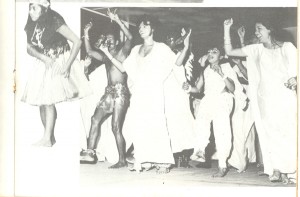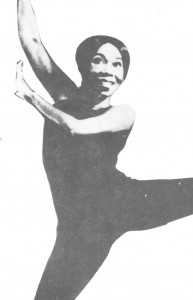Available research points to a number of gatherings of creative spirits in the region long before the genesis of CARIFESTA in 1972. One of the best-known of the pre-CARIFESTA gatherings from the wider Caribbean took place in Puerto Rico in 1952.

Two decades later the celebration of the cultures of the region assumed a more structured, more permanent orientation with the birth of the Caribbean Festival of Arts. (CARIFESTA). The advent of the regional cultural festival was, in fact, part of what can be termed, a logical progression towards the regional post-independence cohesion to which the Caribbean aspired.
Cricket apart, and for all its weaknesses, CARIFESTA can boast of a far more meaningful contribution than any other social force, in what remains the still unrealized quest to truly bring the Caribbean together.
Recently, George Lamming, now the elder statesman of a distinguished regional literary tradition went further. “Carifesta”, he declared, “is one of the most profoundly political events this region collectively undertakes.”
That its genesis lay in the vision of Forbes Burnham is a historical fact. It was, too, the product of outstanding visionary contemplation, a truism acknowledged by Gordon Rohlehr, one of the foremost creative intellects of the region during his singularly brilliant address – “Trophy and Catastrophe” – at Turkeyen at the prize-giving ceremony for the 1987 Guyana Prize For Literature.

What is perhaps equally pertinent about the birth of CARIFESTA was that it coincided with a time of high ideals in a region that had begun to embark on a search for the threads that bound them together. The spirit, the enthusiasm and the energy that informed that search were patently present in the magnificence of the inaugural cultural coming together in August 1972.
Six years earlier, in 1966, Burnham had articulated his vision to a Writers and Artists Conference held in Georgetown to mark Guyana’s independence.
Burnham envisaged a cultural festival that would embrace the art forms imported into the Caribbean by the people who came – from far-flung lands with their music, their theatre, their folklore, their dance, their literature and their art.
By the time the writers and artists met – again in Georgetown – in 1970 the makings of CARIFESTA had already taken shape in discourses among creative people across the region and in the unrelenting enthusiasm for a regional cultural festival that was evident at the levels of both government and people in Guyana, despite the compelling distraction of a challenging political climate.
The staging of a regional cultural festival was driven by considerations of, first, fashioning an event that was inspirational and which provided the region’s creative minds with opportunity to contemplate and exchange views on both the techniques and the motivations that animated them; secondly, CARIFESTA was envisaged as an educational tool insofar as it sought to expose the people of the region to the values that emerged from the various art forms; thirdly, CARIFESTA was to entertain and to do so on a scale and in a fashion that would be memorable.
If the ardour of the countries of the Caribbean may have cooled thirty six years on, there was certainly no shortage of enthusiasm for the event then. Not only was the idea warmly welcomed across the English-speaking Caribbean, but long before the official confirmation of the festival, many countries signified their intention to participate.
Like wild vegetation in damp, accommodating swampland the idea of CARIFESTA grew and spread, across the region during the months that preceded the eventual staging of the event, creating a frenzy of excitement among a Caribbean people, aware that in one particular sense, the germ of at least one facet of the regional coming together that had been envisioned during the earlier pre-independence decades, had at last been created.
And the concept embraced not only the Commonwealth Caribbean but also the mainland territories bordering the Caribbean sea.
The creation of a CARIFESTA Secretariat in Georgetown marked the start of what was to be lavish preparations by Guyana, to play host to the rest of the region. A Caribbean-wide competition yielded an altogether appropriate symbol – a hand, painted brown, grasping the sun in a secure yet delicate embrace, typifying in its symbolism the creative man of the tropics seeking to fulfill a destiny. The image was the work of Billy Ryan Associates of Antigua and was selected from amongst entries submitted by artists from across the region.
On the opening day of the CARIFESTA ’72 a postage stamp bearing the symbol was released here in Georgetown.

Long before CARIFESTA the region had already given birth to a profusion of outstanding literary personages and the festival provided a stage for a parading of talents, a coming together of our writers from the region and the hemisphere. That was the era of literary giants like Suriname’s Robin Dobra, Cuba’s Luis Suardiez, Trinidad and Tobago’s Errol Hill, Guyana’s Denis Williams, Haiti’s Rene Piquion and a host of others who were to blossom both during and after CARIFESTA ’72 and to provide the region with a proud place on the global literary stage.
Twenty seven Caribbean and Latin American countries brought their creative accoutrements to Georgetown in August 1972 to fashion cultural tapestry, a fitting follow-up to the earlier realization of another facet of the history of the Caribbean Archipelago – political independence, In that sense, CARIFESTA was – perhaps above all else – a collective celebration of the removal of the once dominant culture, the colonial culture, and the beginning of a fostering of a culture of our own. CARIFESTA, in that context, was a psychologically liberating festival.
The actualization of CARIFESTA also realized a blending of the hitherto submerged cultures of the societies in which they grew and, somehow, survived. It is the coming together of that Caribbean culture that was the most dominant and distinctive feature of CARIFESTA 72.
The pre-arr-anged programme apart, CARIFESTA 72 allowed for a far more expansive range of creative activity. The artists and writers who gathered in Georgetown debated and discussed the roles of drama, art and threatre and the relevance of criticism in the plastic and fine arts and produced a one-hour broadcast tape on the Caribbean. There were poetry recitals and among those the work of the Surinamese Robin Dobra stood out. Much of this hive of creative activity tool place at Festival City, the now jaded south Georgetown headquarters of the inaugural staging of the event.
At the end of CARIFESTA 72 the Writers and Artists put forward a recommendation for establishing a Caribbean Secretariat of the Arts to ensure regular staging of the festival, to organize exchange programmes, to establish a regional archive of Caribbean folk material and to stimulate more effective use of the mass media in promoting and disseminating Caribbean art and culture – among other things. More than three decades later we sill have no such Secretariat, a circumstance that speaks to the subsuming of Caribbean culture beneath the pursuit of less worthwhile agendas. The region, it appears, is still to understand that without a Caribbean culture there is little left ro hold us together.
The shortcomings notwithstanding, CARIFESTA has provided an interchange of the various cultural manifestations of the region through which we can, perhaps, re-discover our roots and re-evaluate the flowering of our respective cultures. CARIFESTA continues to be a challenge to the peoples and the leaders of the Caribbean to open the floodgates to a cultural unification and, perhaps, to much more.




